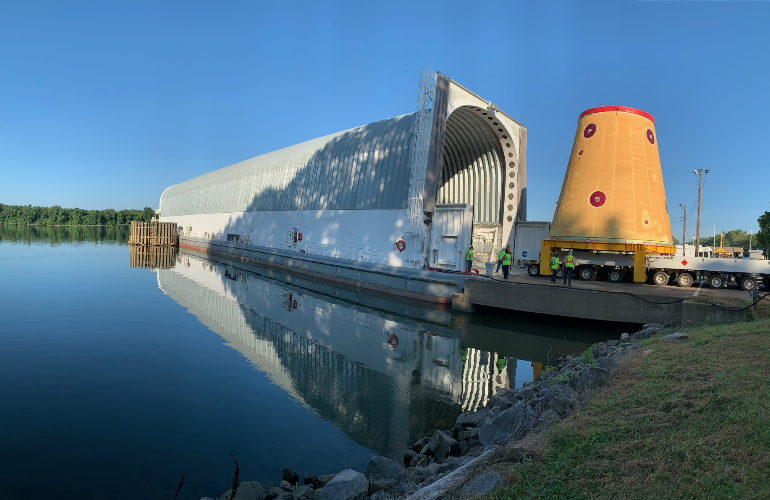Teledyne Brown Engineering, the prime contractor on the project, along with several small business partners, has worked to design and build the Launch Vehicle Stage Adapter (LVSA), a highly engineered and weight optimized piece of spaceflight hardware. LVSA provides the fundamental structural strength required to withstand the launch loads and the maximum dynamic pressure (max q). It also provides the critical separation system used to separate the core stage of the rocket from the second stage, which includes the astronauts in the Orion crew vehicle. The cone-shaped adapter is roughly thirty feet in diameter by thirty feet tall and consists of sixteen aluminum-lithium 2195 alloy panels.
“LVSA is not only a significant achievement for our company, but it is monumental for Marshall Space Flight Center and the Huntsville Community,” stated Jan Hess, President of Teledyne Brown Engineering. “It’s the largest hardware to be completed for the SLS in Huntsville. Our company was an integral part of the country’s first rocket programs with Werner Von Braun, and we continue our legacy and support of space programs with this successful hardware completion for the latest Space Launch System.”
LVSA will be moved by barge to Kennedy Space Center where it will join the rocket’s Core Stage to the ICPS and Upper Stage. It will be incorporated into the final configuration of the SLS for the first Artemis lunar mission. The SLS is the only rocket able to send the Orion capsule, cargo and astronauts to the Moon in a combined mission. The Artemis Mission, including this hardware, will be a part of the first moon landing since Apollo 17 in 1972. Teledyne is currently building an LVSA for the second Artemis lunar mission and starting work on the LVSA for the Artemis III mission, which will land the first woman and next man on the Moon in 2024.

